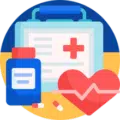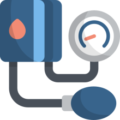Author(s)
Emily Eddy, PharmD, BCACP, BC-ADM
Brittany Long, PharmD, BCACP
Lindsey Peters, PharmD, BCPS
Reviewed By
Lauren Bloodworth, PharmD, BCPS
Deanna Tran, PharmD, BCACP
Joseph Nosser, PharmD
Persaud N, Bedard M, Boozary AS, et al. Effect on treatment adherence of distributing essential medicines at no charge: The CLEAN meds randomized clinical trial. JAMA Intern Med. 2020; 180 :27-34.
The Problem:
Medication adherence plays a very significant role in achieving positive patient health outcomes and when medication regimens are not followed, patients often fail to reach optimal disease control.1 This is especially concerning in ambulatory care settings where chronic disease states are most often treated. One of the potential barriers to optimal medication use is cost.
What’s Known:
Nonadherence to medications is not only a problem in the United States but a worldwide issue. In developed countries, medication adherence rates have been estimated to be only 50% for chronic diseases like hypertension and diabetes.1 Many modifiable and non-modifiable factors contribute to nonadherence including low health literacy, patient forgetfulness, regimen complexity, side effects, psychosocial concerns, patient belief systems, as well as medication cost.1,3 This list is not exhaustive, but each of these factors can influence appropriate medication use. Adherence is a multifactorial process.1 Ideally, by minimizing barriers, such as medication cost, patient medication adherence would increase leading to positive improvements in health outcomes.
What’s New:
The CLEAN Meds Randomized Clinical Trial2 was a multicenter, unblinded, parallel, 2-group, superiority trial conducted at 9 primary care centers in Ontario, Canada. The trial enrolled 786 patients who self-reported cost as a barrier to medication adherence. Patients were randomly allocated to receive free medications from a list of 128 essential medications in addition to usual care (n=395) or usual medicine access in addition to usual care (n=391).
The primary outcome in the intention-to-treat study was adherence to medications that were appropriately prescribed over 12 months. Adherence was measured by using the lowest estimate from either: 1) reviews of primary care records for prescription renewal intervals during the study period or 2) patient reports of the number of missed doses during the previous week. The patient report was obtained from follow-up telephone interviews and email surveys between 9 and 12 months after study enrollment. Of note, researchers had intended to use data from electronic pill bottle caps for adherence but were unable to do so due to missing data.
Predefined secondary outcomes included the proportion of medications that were appropriately prescribed and the proportion of medications that met adherence criteria. In addition, clinical measures were also reported. Changes in hemoglobin A1c levels in patients treated for type 1 and type 2 diabetes, blood pressure in patients treated with an antihypertensive, and low-density lipoprotein (LDL) cholesterol levels in patients treated with a statin. Researchers also assessed 14 patient-reported outcomes. Baseline characteristics for both study groups were similar (Table 1). The mean age of participants was approximately 51 years old and the mean number of medications at baseline prescribed in the free med group (3.6) was similar to the mean number of medications in the usual access group (4.0).
Table 1. Selected Baseline Characteristics in CLEAN Meds Study
|
Characteristic |
Free Med Group (n=395) % Participants |
Usual Access Group (n=391) % Participants |
|
Female Sex |
55.7 |
56.0 |
|
White Race/ethnicity |
64.8 |
66.5 |
|
Main Income Source |
||
|
Wages and salaries (including self-employed) |
55.2 |
56.5 |
|
Pension |
12.7 |
10.7 |
|
Social support (eg, welfare/disability) |
9.1 |
12.0 |
|
Unemployment insurance |
3.8 |
2.3 |
|
Other or declined |
19.3 |
18.4 |
|
Household Income ($Canadian)a |
||
|
<$30,000 |
51.9 |
46.5 |
|
30,000-70,000 |
23.3 |
25.3 |
|
> $70,000 |
5.3 |
5.6 |
|
Declined to Provide |
19.5 |
22.5 |
|
Types of Medication Treatment at baseline |
||
|
Diabetes Treatment |
22.5 |
23.3 |
|
Antihypertensive Treatment |
30.9 |
29.2 |
|
Statin Treatment |
20.5 |
20.7 |
aThe median Canadian household income in 2015 was $70,336 and the poverty line was $37, 542.
After 12 months of follow-up, patients in the free meds group were more like to be adherent to all medications when compared to the usual access group. There was also a significant reduction in the systolic blood pressure when compared to baseline in the free med group. See Table 2. There were statistically significant differences between groups in 9 of the 14 patient-oriented outcomes. Compared with the time of enrollment, participants in the free med group were more likely than those in the usual care group to report receiving their medicines before the previous prescription ran out, more likely to report that their care improved, and more likely to report being able to “make ends meet” or afford necessities. There was no statistically significant difference between groups in the following 5 of 14 patient-oriented outcomes: receiving medicines in good condition, receiving new medicines quickly, reported medicine adverse effects, having unanswered questions about medicines, and information changing the way medicines were taken. There were no substantial differences between groups in terms of serious adverse events (33 of 395 [8.4%] vs 35 of 391 [9.0%]; p = 0.80) or other safety outcomes.
Table 2. Primary and Secondary Outcomes Results
|
Primary Outcome |
||||
|
Outcome |
Free Meds Group (n=395) |
Usual Access Group (n=391) |
Difference, % (95% CI) |
P Value |
|
Participants appropriately adherent to all medications |
151 (38.2) |
104 (26.6) |
11.6 |
< 0.001 |
|
Secondary Outcomes |
||||
|
Outcome |
No. of Free Distribution Group Participants |
Mean Baseline, mean (SD) |
Difference (95% CI) |
P value |
|
Systolic blood pressure, mmHg |
105 |
137 (19) |
-7.2 |
0.002 |
|
Hemoglobin A1C, % |
73 |
8.20 (1.86) |
-0.38 (-0.76 to 0) |
0.05 |
|
LDL cholesterol level, mg/dL |
48 |
88.9 (38.7) |
-2.3 (-14.7 to 10) |
0.70 |
Our Critical Appraisal:
When assessing the impact of free medication distribution, the location of the study (Canada) was a strength because physician care and hospitalizations are universally publicly funded. This allowed better insight into how eliminating the barrier of medication cost specifically influences patient adherence. However, as noted by the authors, the findings might not be generalizable to other high-income countries or health care systems. Additionally, the authors evaluated several secondary endpoints that were clinically markers of disease and go beyond reporting solely medication adherence. A final strength of the trial was the development of the essential medication list. The list was based on the 2013 World Health Organization (WHO) Model List of Essential Medicines, Canadian clinical practice guidelines, suggestions from clinicians and patients, prescribing volumes, and other clinically-relevant factors. However, it is important to note that many common medications utilized in the United States (e.g. lisinopril, losartan, metoprolol) were not included on the free med list.
The study has a few limitations that should be noted. While there is no “gold standard” for the measure of medication adherence, the authors did attempt a three-pronged approach (questionnaires, chart review, and electronic monitoring) to gather the most accurate assessment of adherence. Unfortunately, the electronic monitoring data was not included in the analysis due to too much missing data. Bias is a potential problem. Given the unblinded nature of the study, both clinicians may have behaved differently and patients may have overstated their degree of adherence with the hopes of continuing to receive free medications. Additionally, the majority of free medications were mailed and this delivery route has been associated with greater adherence rates in previous literature.4 Finally, the authors did not measure patient adherence at baseline which obviously could impact future adherence rates (the primary outcome).
The secondary outcomes of this 12-month study were surrogate endpoints of disease. This trial was not designed nor powered to evaluate morbidity and mortality. Many factors influence glycemic, lipid, and blood pressure control such as diet, exercise, lifestyle choices, disease duration, and these confounding variables were not accounted for. While the list of essential medications included medications for many other chronic disease states (e.g. schizophrenia), outcomes related to these disease states were not evaluated.
Adherence is important and free distribution of essential medications removes cost as a potential barrier. While these data a compelling, it is difficult to prove causality between the increases in adherence and improvements in the surrogate endpoints associated with free medications due to unaccounted variables. Further research is needed to determine if providing medications free of charge is a realistic and economically sustainable solution. The cost-effectiveness of the intervention will be assessed after the 24-month trial is complete and should provide important insights. Finding the “right” patient or patient population for whom the provision of free medications is more beneficial is needed.
Although the pharmacist’s role in medication adherence was not addressed specifically in this study, ambulatory care and community-based pharmacists should clearly play an important role. Pharmacists routinely identify and address the barriers that impact medication adherence, including medication cost.
The Bottom Line:
Distributing free essential medications to patients who expressed difficulties affording medications improved medication adherence. In a subset of patients taking antihypertensive medications, free access to medications lowered systolic blood pressure. However, patient adherence to medications is multifactorial; medication cost is an important component but is not the only factor. High-quality pharmacoeconomic studies are needed to better under the economic costs and clinical benefits of providing essential medications for free. None-the-less, this trial provides some useful data to make evidence-based policy decisions.
The Key Points:
- The distribution of free medications to patients who reported cost as a barrier led to a significant improvement in adherence compared to usual care in a Canadian population.
- High-quality studies are needed evaluating the cost-effectiveness of providing free essential medications and identifying the patient populations that would benefit most.
- Medication nonadherence is a problem that ambulatory care and community pharmacists encounter every day and one that requires personalized solutions.
FINAL NOTE: This program will be available for recertification credit through the American Pharmacists Association (APhA) Ambulatory Care Review and Recertification Program. To learn more, visit https://www.pharmacist.com/ambulatory-care-review-and-recertification-activities.
1. World Health Organization. Adherence to long-term therapies: evidence for action. http://www.who.int/chronic_conditions/en/adherence_report.pdf. Published 2003. Accessed February 10, 2020.
2. Persaud N, Bedard M, Boozary AS, et al. Effect on treatment adherence of distributing essential medicines at no charge: The CLEAN meds randomized clinical trial. JAMA Intern Med. 2020;180(1):27-34. doi:10.1001/jamainternmed.2019.4472
3. Bosworth HB, Granger BB, Mendys P, et al. Medication adherence: A call for action. Am Heart J. 2011;162(3):412-424. doi: 10.1016/j.ahj.2011.06.007
4. Persaud N, Lee T, Ahmad H, et al. Protocol for a randomised controlled trial evaluating the effects of providing essential medicines at no charge: the Carefully seLected and Easily Accessible at No Charge Medicines (CLEAN Meds) trial. BMJ Open. 2017;7:e015686. doi:10.1136/bmjopen-2016-015686






 iForumRx.org is a web-based community of practice designed to inform ambulatory care pharmacy specialists, pharmacy residents, and student pharmacists about high-quality, practice-changing evidence.
iForumRx.org is a web-based community of practice designed to inform ambulatory care pharmacy specialists, pharmacy residents, and student pharmacists about high-quality, practice-changing evidence.